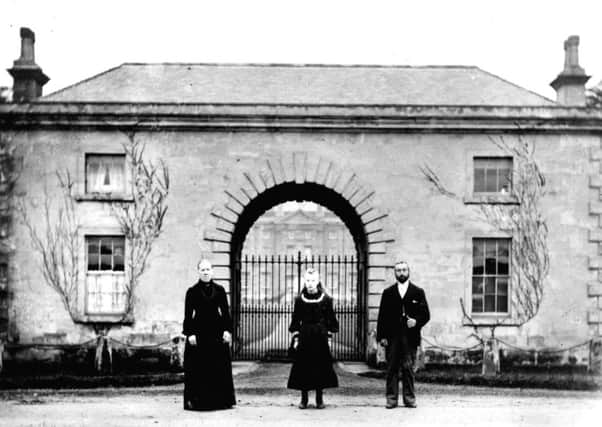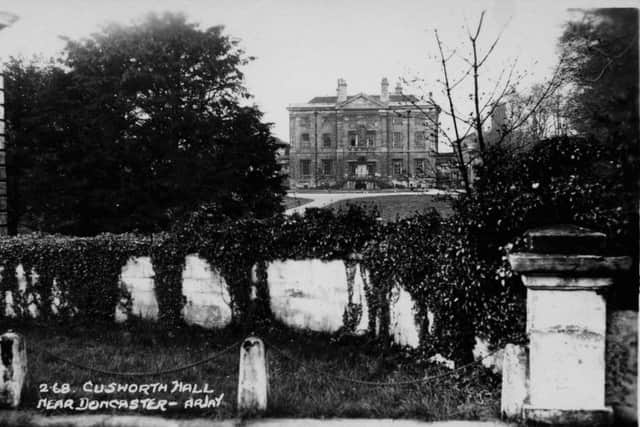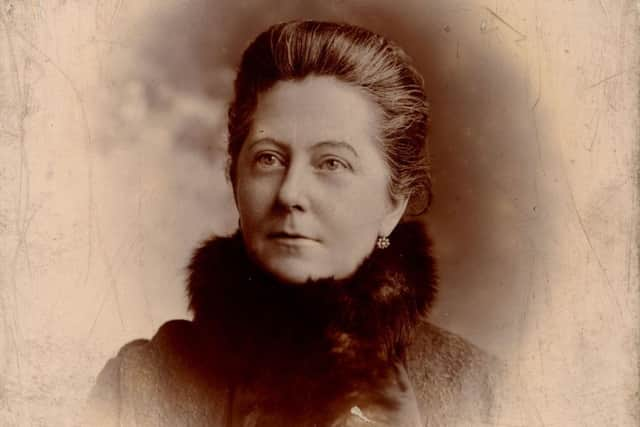HERITAGE: The life of Cusworth Hall's Lady Isabella Battie-Wrightson


Between 1891 and 1909 she presided over some of the most ambitious changes and events ever seen at the hall and park.
Lady Isabella Georgiana Katherine Cecil was born on August 15, 1853, the third child and eldest daughter of William Alleyne Cecil, the Third Marquess of Exeter. Her childhood was spent at the family home of Burghley House in Stamford. As a high-ranking female in Victorian Britain, the only practical option for Lady Isabella was to marry. For several years she socialised at parties and receptions throughout the London ‘season’ from March until August, but no offers of marriage were made to her until she reached the age of 30.
Advertisement
Hide AdAdvertisement
Hide AdIn 1884 Lady Isabella became engaged to Mr William Henry Thomas of Doncaster. William Henry was the eldest son of the Rector of Warmsworth. He was educated at Eton and later qualified as a barrister, but at first glance, seems socially inferior to his wife. However, for many years, William Henry Thomas had been the heir apparent to the estates of both Cusworth Hall and Warmsworth Hall. He would one day inherit a great deal of land and property.


William Henry and Lady Isabella were married on August 7, 1884, in the church of St Thomas, London. Following their honeymoon, they moved to Warmsworth Hall in Doncaster. Their first child was born four years later, on August 24, 1888, when Lady Isabella was 35 years old. The boy, named Robert Cecil after his mother’s family, became the apple of her eye. Two years later, on November 6, 1890, her daughter Barbara Isabella Georgiana was born.
On September 12, 1891, William Henry’s great-uncle Richard Heber Wrightson died at the age of 91. Lady Isabella and William Henry Battie-Wrightson moved along with their children into their new home at Cusworth Hall as soon as they could. Immediately, William Henry applied to change his surname by Royal Licence to the old family name of Battie-Wrightson. Permission was granted by Queen Victoria on December 26, 1891.
However, the happy family life enjoyed by Lady Isabella was suddenly shattered in March 1903, when her husband William Henry collapsed with a brain haemorrhage. He died at Cusworth Hall on April 28, 1903 aged only 47. Lady Isabella was plunged into deepest grief, yet she was immediately faced with a new threat. A mere five days after his funeral, she received a court summons, and the plaintiff was her own brother-in-law Charles Freeman Thomas. He claimed that the Cusworth estate was rightfully his, because Lady Isabella’s son Robert Cecil, at only 15, was too young to inherit the Hall. Charles Freeman Thomas argued that he was the next male in line to inherit, and Lady Isabella and her children must vacate the premises at once. Lady Isabella eventually had to agree to pay an out-of-court settlement to him amounting to £20,000, but she was granted permission to remain at Cusworth and run the estate on Robert’s behalf until he reached the age of 21.
Advertisement
Hide AdAdvertisement
Hide AdLady Isabella remained very active during her years in charge at Cusworth Hall. Many improvements were carried out to the Hall during this time, including the addition of central heating, the installation of a lift between two floors, and connection to the telephone exchange. Her most ambitious project was an extension to the Hall in 1907, with the addition of an extra servants’ quarters, and a New Dining Room next to the Chapel. Lady Isabella used this new room as the setting for the fancy dress parties she held for the estate workers and their families every Christmas. She ordered fancy dress costumes from Harrods for the staff and children to wear, and each estate child was given a gold sovereign as a present.


On August 24, 1909, Lady Isabella’s son Robert reached the age of 21 and was able to take over the running of the Hall and the estate. His birthday was therefore celebrated in spectacular style at Cusworth Hall. Lady Isabella commissioned Harrods of London to set up a marquee in the grounds and they provided the food and evening entertainment. She invited all of her estate workers, her agricultural tenants and her cottage tenants, in addition to 35 local shopkeepers and business leaders.
After 1909, Lady Isabella was seen less frequently at Cusworth. When the Great War broke out in 1914, Lady Isabella relocated permanently to Wothorpe Villa in Stamford, and turned it into a private convalescent hospital for wounded soldiers. She soon styled herself ‘Commandant of the Villa Hospital’. Lady Isabella’s active involvement in war work gave her a new purpose in life. She became a regular supporter of the Red Cross Society, and in the summer of 1917, she organised a fete which raised over £400 for the organisation.
In October 1917, while carrying out work to support the Red Cross, Lady Isabella caught a chill. This rapidly turned into pneumonia, and on October 29, 1917, she died at her home at Wothorpe Villa. She was 64 years old. Her body was brought back to Doncaster, and she was interred in the family vault at Warmsworth alongside her husband William Henry. The news of her death was received with great sadness at Cusworth Hall and in Cusworth village.
Advertisement
Hide AdAdvertisement
Hide AdSadly, however, Lady Isabella’s great hopes for her son Robert Cecil would amount to nothing. Although a kind and generous man, Robert presided over a gradual decline of the Cusworth estate from which it never fully recovered. He was eventually forced to sell off most of the family land and property, and the hall and park began to crumble and decay.
Robert died in 1952 without any children, the last of the Battie-Wrightsons to call Cusworth Hall his home.